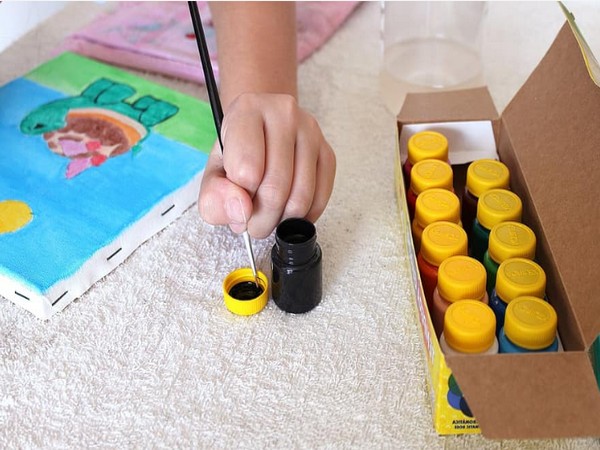Painting develops children's cognitive, artistic abilities: Study
A new research, using digital image analysis technology, has shed light on some of the challenges children face when representing their imaginations through the medium of paint.

- Country:
- Japan
A new research, using digital image analysis technology, has shed light on some of the challenges children face when representing their imaginations through the medium of paint. The research from Japan Advanced Institute of Science and Technology (JAIST), also offered concrete insight into the development of children's psyches, and importantly, offers suggestions for educators to improve children's cognitive, spatial, and artistic abilities.
Painting is a recreational and creative activity enjoyed by children across the world. However, children's paintings also serve as crucial artifacts of their perceptions, as they contain the sum of what children see as "essential." The spatial relationships between objects in paintings represent painters' experiences and technical prowess and tend to indicate shortcomings of either. These are often perceived by viewers of paintings, but until now, detailed evaluation and analysis of children's art have been subjective, relying on the trained eye of an artist or critic.
JAIST researchers Lan Yu and Yukari Nagai have developed and tested a digital analysis process by which children's paintings can be digitised, categorised, and then thoroughly analysed. Content, scale, patterns, details, and the relationships between objects in the paintings are objectively quantified and calculated. Trends identified among the subjects sampled, 182 girls and 234 boys in the Republic of China, indicate that children who have not received instruction display poor abilities to recognise and emulate spatial relationships.
The younger the painter, the less likely that he or she will have developed these cognitive abilities. Lack of detail and inability to imitate objects is identified as common to children's painting. Statistical analysis of the boys and girls in this study indicated that they have different attitudes toward painting; girls preferred participating in painting more than boys did. This research has implications in art education, suggesting that art teachers focus on several key elements that are useful to the cognitive development of young painters.
Guiding children to paint objects outside could enhance their awareness of their natural environments. Focusing instruction on object size, and the ability to recognise and control it could remedy this crucial deficit in children's paintings. Specifically training students to imitate objects could show significant results in the overall quality of children's paintings. And finally, instruction in composition and creative methods is correlated to increasing the enjoyment and reducing children's perception of difficulty toward painting as a creative process. (ANI)
(This story has not been edited by Devdiscourse staff and is auto-generated from a syndicated feed.)










